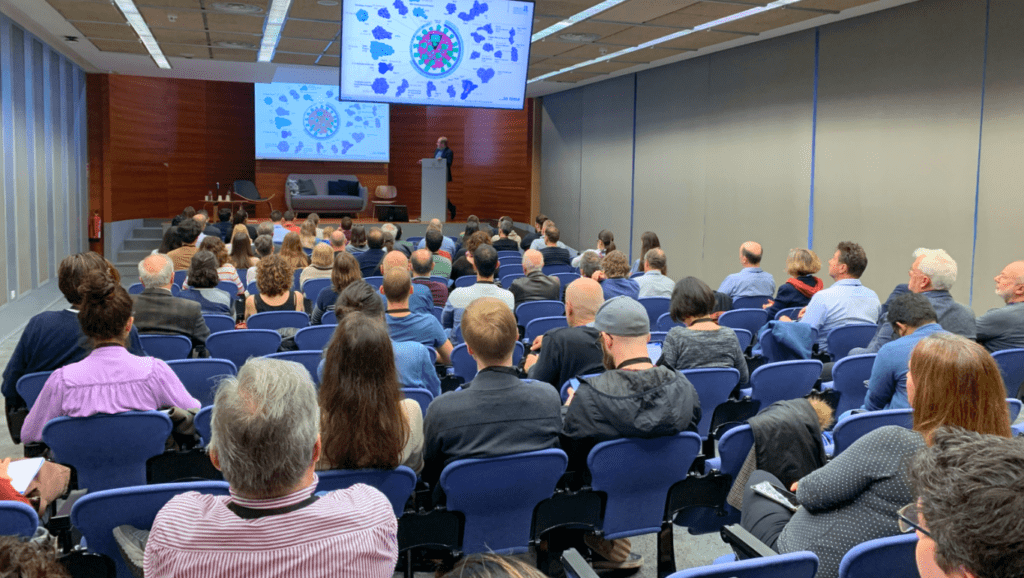The Barcelona Integrative Resonance Symposium, organised by the CCiTUB, the UB and IBEC, took place on 20 and 21 March. The event brought together about 100 people working with magnetic resonance imaging techniques in a multitude of applications, such as biomedicine, quantum computing or paleontology.

The Scientific and Technological Centers of the University of Barcelona (CCiTUB), the University of Barcelona, and IBECO organized the Barcelona Integrative Resonance Symposium on March 20 and 21. The event brought together around 100 people from various national and international institutions working with magnetic resonance techniques in a wide range of applications and scientific fields.
One of the speakers was Irene Marco-Rius, who leads the Molecular Imaging for Precision Medicine group at IBEC. Dr. Marco-Rius spoke about the projects she is carrying out related to Hyperpolarization-enhanced Nuclear Magnetic Resonance and Magnetic Resonance Imaging techniques for applications in tissue engineering. These techniques allow a real-time metabolic analysis of the samples without destroying or modifying them since magnetic resonance is a non-destructive and non-invasive technique.

The most novel thing about the research led by Marco-Rius is that they will be able to compare different models using a single piece of equipment. Thanks to these imaging techniques, it will be possible to validate the operation of the organs-on-a-chip in vitro models by comparing them with in vivo measurements taken in mouse models.
“With this technique, we will be able to confirm whether organs-on-a-chip are the way forward to replace animal testing. In addition, we could potentially use human tissue on these platforms to test different drugs and use them in personalized medicine.”
Irene Marco-Rius
An example of a project using this technology is the European project BLOC (“Benchtop NMR for lab-on-a-chip”), which is developing a benchtop spectrometer based on magnetic resonance spectroscopy and dynamic nuclear polarization imaging (DNP-MR). The integration of this technology with tissue engineering systems will be applied to monitor diseases and evaluate responses to different stimuli. In the context of this project and collaboration with IDIBAPS, a biomimetic model composed of liver and pancreas cells is being developed to study metabolic diseases such as diabetes or non-alcoholic fatty liver disease.
In addition, the event served as a kick-off meeting upon the installation of three new magnetic resonance instruments in Barcelona. One of them is located at IBEC and is the one being used by Irene Marco-Rius’ group. It is a state-of-the-art Magnetic Resonance Imaging (MRI) equipment funded by the Complementary Plan for Biotechnology Applied to Health of the Ministry of Science and Innovation. Together, the new facilities are a sign of the vitality of the magnetic resonance community.
The symposium lasted a day and a half and was attended by 23 speakers. The list was balanced between consolidated scientific leaders and early career scientists representing the bright future of magnetic resonance in Catalonia, Spain, and Europe.





